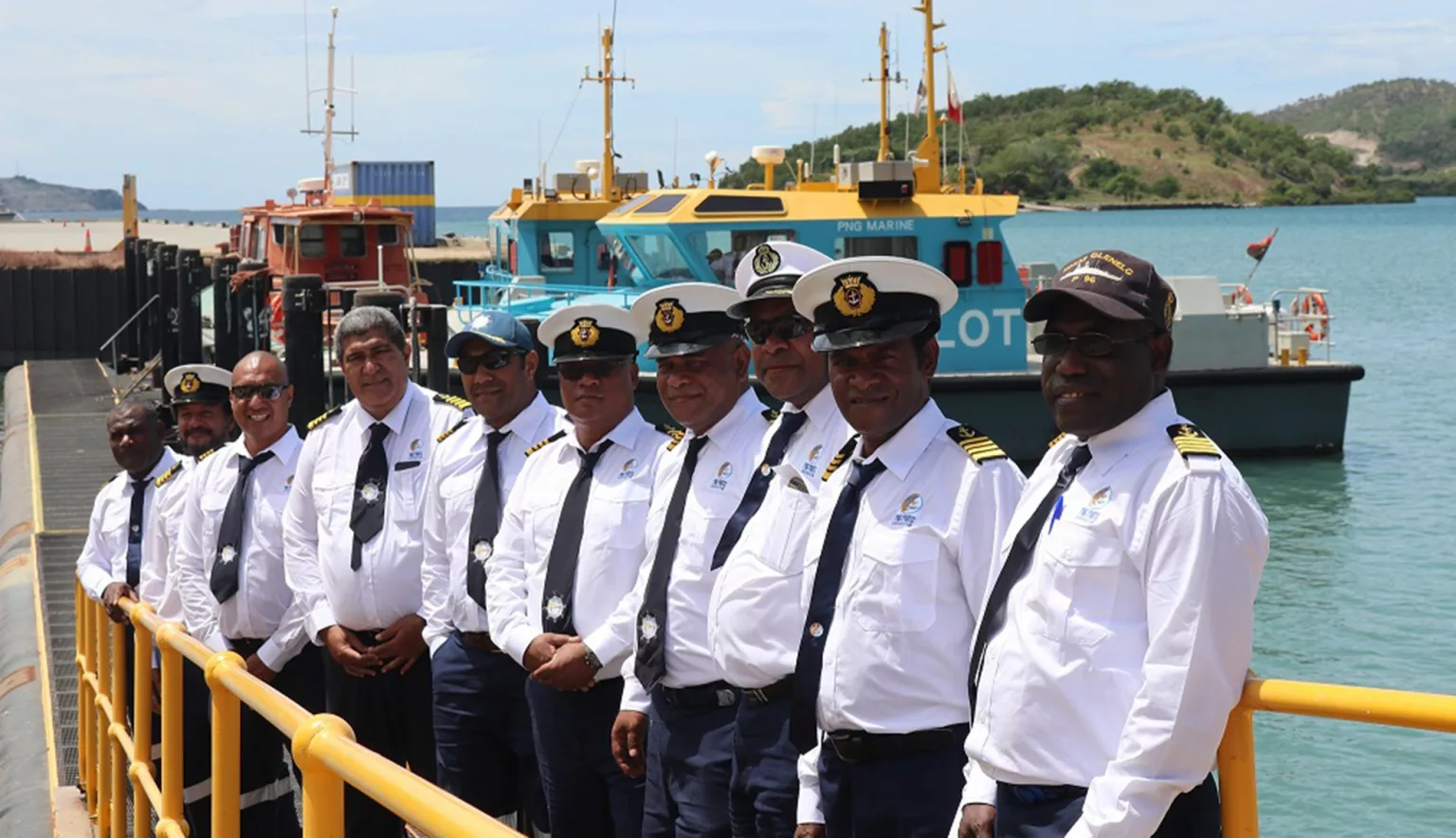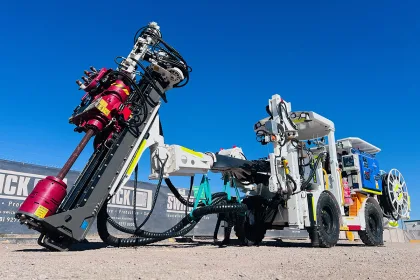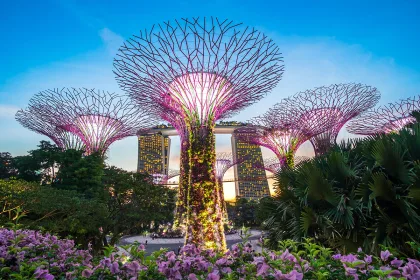We speak to the executive team of PNG Ports Corporation about the recent investments and developments in Papua New Guinea’s shipping space, and how the company adapted in light of COVID-19.
MARITIME MASTER PLANNING
As one of the oldest state-owned entities in Papua New Guinea (PNG), PNG Ports Corporation (PNG Ports) serves the nation’s needs for the transportation of goods and acts as PNG’s gateway to the world as the primary national seaport facilities provider.
PNG Ports is the sole authority over all declared ports in the country and manages 15 of the 23 sites: Lae, Port Moresby, Kimbe, Madang, Alotau, Rabaul, Kavieng, Oro Bay, Kieta, Buka, Vanimo, Lorengau, Wewak, Daru and Aitape.
“We perform a duality of roles, insofar as we are the commercial port operator for each of the port facilities we manage,” begins Fego Kiniafa, Managing Director of the company. “Additionally, PNG Ports fulfils a regulatory function as ‘port manager’ to provide harbour management and maritime compliance for each declared port zone we operate in, under delegation from the PNG Department of Transport and Infrastructure.
“Our client base mainly consists of shipping lines, their agents and those that lease yard space or warehousing at our ports,” adds Ian Hayden-Smart, Chief Commercial Officer of PNG Ports. “In broader terms, we see ourselves providing a pivotal role facilitating imports, exports and coastal cargo movement for the ultimate benefit of all people in PNG.
“We see ourselves as being a good corporate citizen and a part of the broader community in which we operate, and support worthwhile causes in those communities, such as schooling, churches and sports clubs.”
OPERATING PNG
Traditionally, the core business of PNG Ports was to act as a landlord to provide port facilities for berthing and wharfage services for shipping companies, as well as storage provided for container and generalised cargo transiting through its ports. Additionally, the company offers a pilotage service to its customers and exists as the preeminent pilotage provider in PNG.
PNG Ports employs over 450 people, who it considers its most important assets and the company is committed to their development, satisfaction, health and wellbeing. This is paramount to the success of PNG Ports as well as its ability to create value for its customers and stakeholders.
“By way of example with respect to health and wellbeing, we rolled out personal protection equipment (PPE) to our pilots in late February 2020, and to the remainder of staff by mid-March,” Kiniafa explains. “We could foresee the catastrophic impact that COVID-19 could have on them and the country as a whole very early, and the potential that supplies of PPE may become scarce, and so we acted swiftly.”
“We are constantly looking at ways to improve our services – we are investing in the upgrading of our ports, our employees, our infrastructure and equipment”
Ian Hayden-Smart, Chief Commercial Officer, PNG Ports Corporation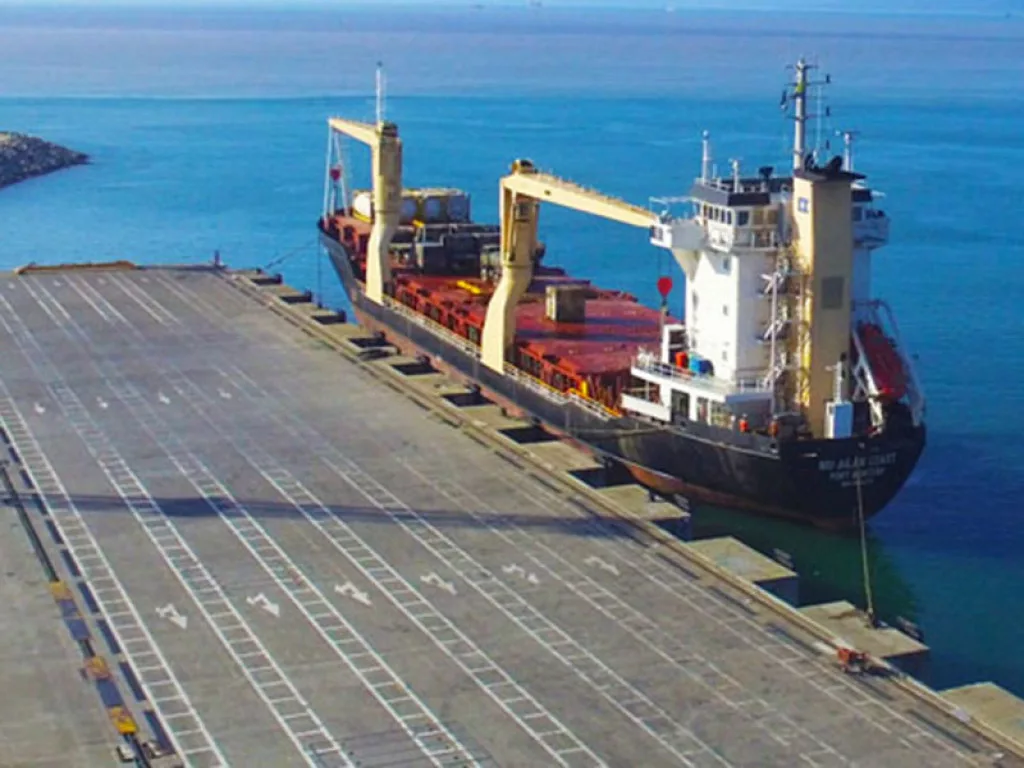
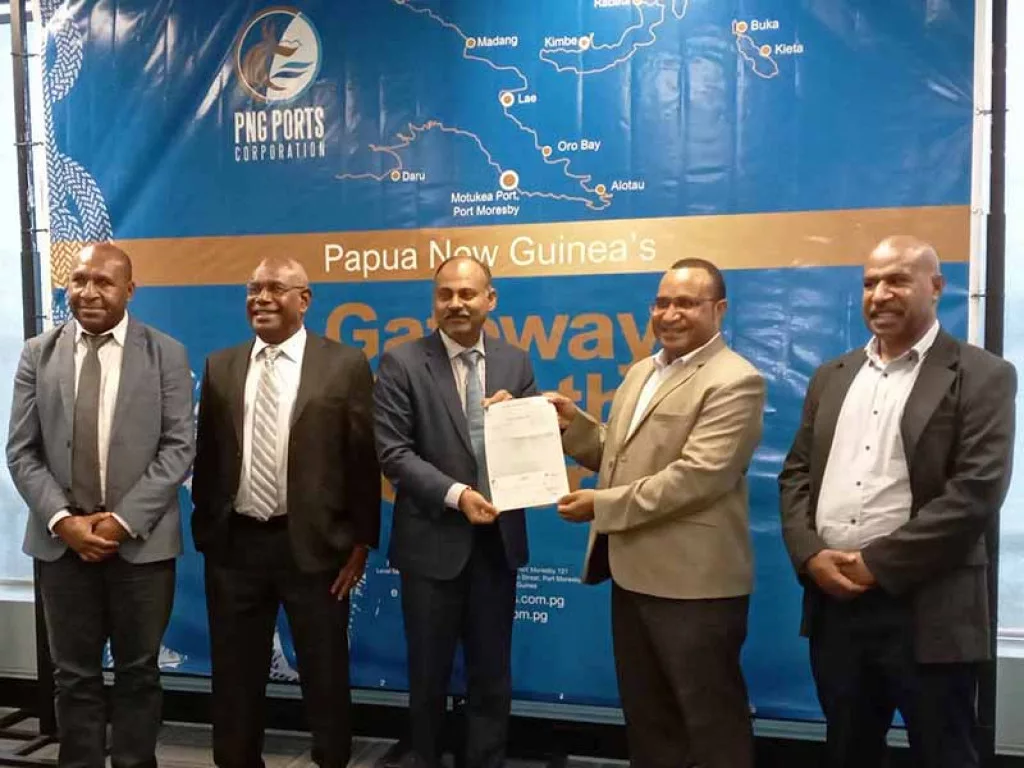
NAVIGATING COVID-19
PNG’s first recorded case of COVID-19 was in late March 2020, which promoted the State of Emergency to be called. For PNG Ports, as a demand-derived business linked closely to the government, there arose a great deal of pressure to see results achieved. The closing of borders associated with COVID-19 has not favoured PNG Ports due to the company’s reliance on sea trade, however adaptation has been key to moving forward, as Hayden-Smart elaborates.
“PNG Ports’ senior managers were on the initial taskforce advising the National Department of Health on COVID-19 matters relating to seaports in early 2020. They were also on the State of Emergency national operations centre taskforce when this was declared,” he informs us. “In conjunction with the Department of Transport and other governmental agencies, and with the full support and assistance of shipping lines, agents, terminal operators and stevedores, PNG Ports managed to mitigate any interruption to trade, save for two instances where provincial authorities temporarily stopped vessels berthing. It was a very effective method of preventing challenges from occurring.”
COVID-19 has impacted the company and wider industry in slowing down supply chains, but PNG Ports has managed to work through the issues presented during the period. The company is well-versed in identifying the best suppliers available in the moment and nurturing these relationships to the greatest benefit and outcome. As a matter of policy, PNG Ports attempts to procure local manufacturers and suppliers because, not only does this speed up the supply chain in most instances, but localised relationships also support local business leading to the economic betterment of all.
RELIANCE ON SHIPPING
PNG Ports is a state entity that has, over the years, evolved to improve its ports and services to not only grow its business, but also to ensure that it continues to operate and deliver a vital service to the people of PNG.
Through PNG Ports, the government of PNG has invested heavily in port infrastructure over the past 10 years, mainly in Port Moresby (Motukea), Lae and Kimbe. This near two-billion kina investment, intended to make these ports more efficient, also has the inherent advantage of lowering supply chain costs for the benefit of PNG as a whole.
“12 of our ports are what we classify as community service obligations (CSO) ports, that is to say they would not be able to support themselves into the future, on a standalone basis without a significant increase in charges at each,” Kiniafa informs us. “As an island nation we are dependent on sea borne trade, both internationally and domestic. Through cross-subsidisation from the other three ports, we have managed to keep them open and maintain charges at a much lower level than they would be otherwise.”
The terminal operations are two of the biggest, and Port Moresby and Lae are now managed by International Container Service Incorporated (ICTSI) under a 25-year concession agreement with PNG Ports.
“Through this agreement, we have now made these two ports more efficient, with less waiting time to berth, quicker turnaround time for vessels and shorter waiting time for trucks; these are just some of the many positives that have come out of this bold move,” Hayden-Smart continues. “We are constantly looking at ways to improve our services – we are investing in the upgrading of our ports, our employees, our infrastructure and equipment such as our marine pilot boats.”
PNG Ports is the only pilotage company in the country that can provide pilotage services 24/7 throughout its network and at third-party ports, utilising state of the art equipment and extremely well-trained pilots and boat crews.
“The success of PNG Ports is heavily reliant on the wellbeing of our staff across our network of ports”
Fego Kiniafa, Managing Director, PNG Ports CorporationINVESTING AND DEVELOPMENT
Currently, PNG Ports is executing a pilot boat re-fleeting programme, with two new pilot boats already in service and utilised on one of the company’s contracts in the oil and gas space, which PNG Ports commissioned from Norman R. Wright and Sons (NRW) in Brisbane, Australia. A third boat is already part way through building, and the company intends to commission a further two in the future.
NRW were selected as the preferred supplier after an exhaustive tender process, which saw seven respondents from a total of three countries in the region.
“We are extremely impressed with the boats,” Kiniafa tells us. “These boats are a significant investment on the part of PNG Ports and will be critical to ensuring that we can meet the exacting requirements of our customers now and into the future. Some of our competition utilise very old pilot boats, banana boats and even dinghies. This re-fleeting programme should provide PNG Ports with a competitive edge in the coming years.”
PROJECTS UNDERWAY
PNG Ports recently launched its 30-year infrastructure master plan, which is the first of its kind undertaken by any state-owned enterprise and also a first for PNG Ports.
This master plan will guide the company over the next three decades to rehabilitate all port infrastructure, and by 2050, PNG Ports should have improved infrastructure compatible with modern industry and the highest safety standards.
“The master plan highlighted the dilapidated state of most of our CSO ports, as historically the profitable ports tended to be the ones which received upgrades,” Hayden-Smart elaborates. “The launch of the plan coincided with the signing of a MoU (memorandum of understanding) between the Australian government and PNG Ports for a finance facility comprising of a combination of interest free grants and concessional financing to support the modernisation initiatives of PNG Ports’ maritime infrastructure across the country.
“This support shows the faith that the Australian government have in the board and management of PNG Ports to implement the master plan.”
The company will commence implementation of the plan in early 2022, with Oro Bay, Kavieng, Kimbe and Vanimo being amongst the first to be upgraded, with the others will follow over the coming three years.
“Furthermore, we are thankful to the Australian government for having the confidence and trust in the awarding of an initial 26-million-kina security project grant, and the nine-million kina upgrade of our Daru Port,” Hayden-Smart adds.
With such funding support, the guidance of PNG Ports’ master plan and the safety and security upgrades, PNG Ports will have improved, modern and safe facilities that meet global standards. This will place PNG as a maritime leader and a regional shipping hub for the Pacific whilst contributing to the PNG government revenue and providing first class service to the people of PNG.
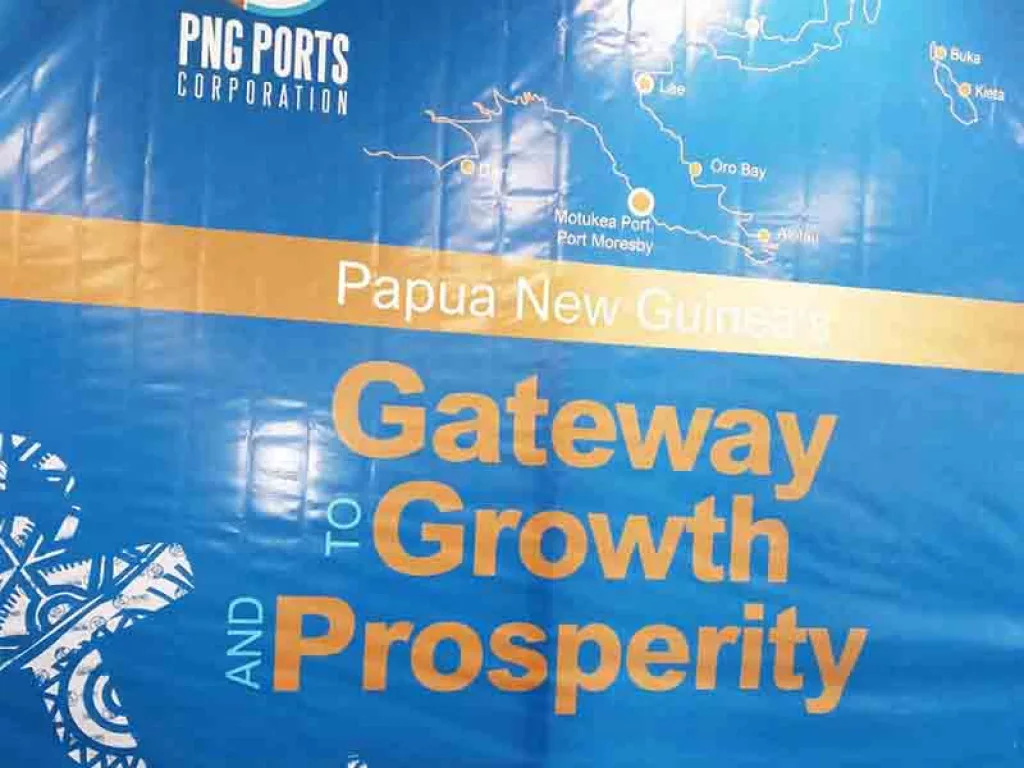
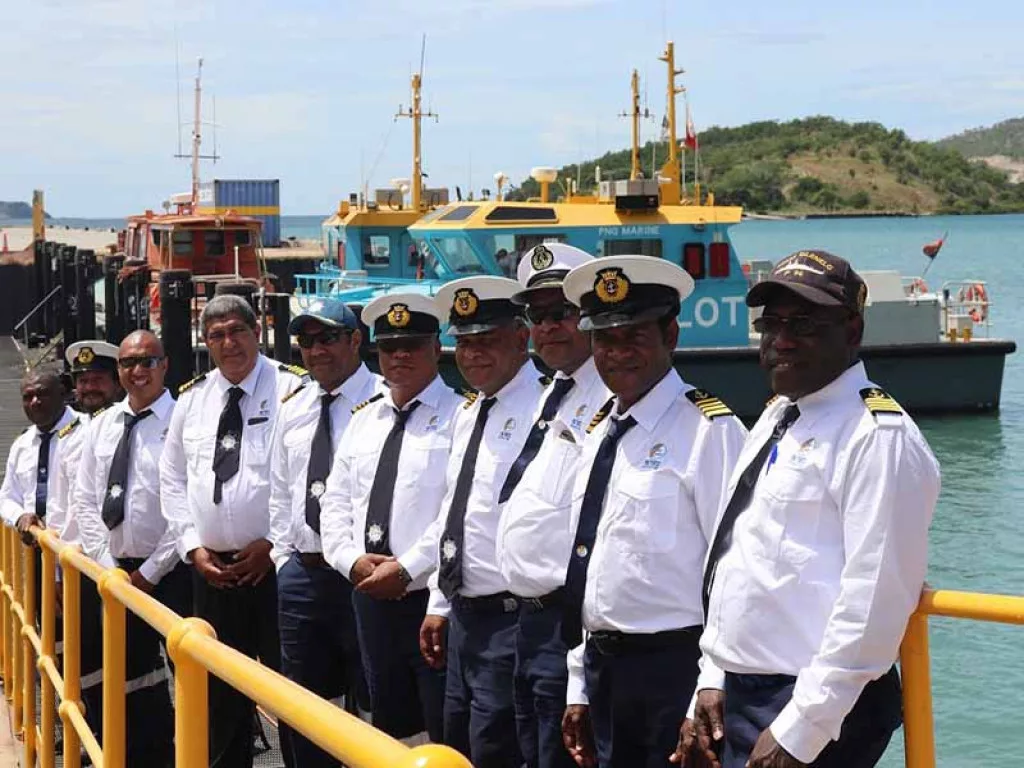
2022 AND BEYOND
Moving forward in the shipping space, PNG Ports’ main focus for 2022 will be the rolling out the aforementioned ports master plan and the commencement of rehabilitating a number of its ports in the new year. The initial focus will rest on Oro Bay, Kavieng, Kimbe and Vanimo at a total cost approaching 400-million kina. These investments will have a significant economic benefit, at both a provincial and national level.
“PNG Ports has committed to expanding its competitiveness with other transshipment hubs in the South Pacific region, by improving its port infrastructure quality and performance,” Kiniafa tells us. “PNG Ports views the international transshipment strategy as critical and possible within the short term.
“Additionally, we are looking at an inland hub concept at three locations, two in the highland provinces and one in a coastal province,” Hayden-Smart concludes. “This is intended to facilitate an improvement in in-land logistics as well as improving supply chains for producers and others out of the PNG highlands provinces into coastal regions to better the business for the coming years.”



